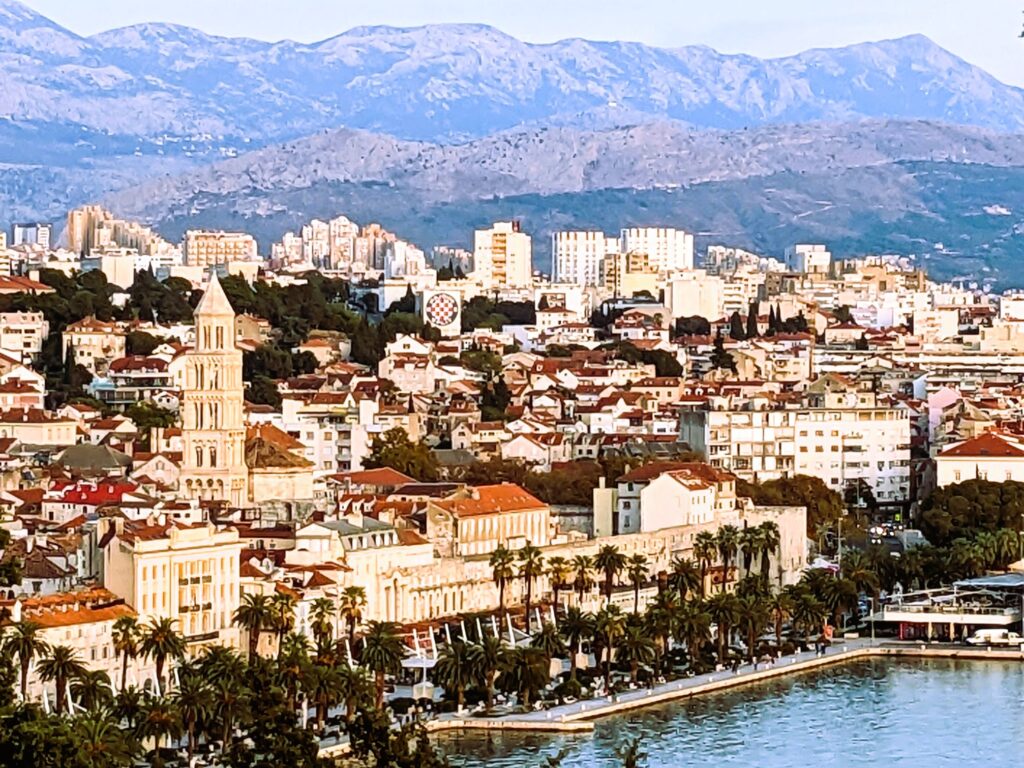
A Treasured Hill in the Heart of Split
Marjan Hill was one of our favorite places to spend time while staying in Split. A 583-foot-high paradise in the center of the city, Marjan Hill provides excellent views of Split and the surrounding mountains, along with sweeping vistas of the bay and the nearby islands.
The best part of the hill, aside from being a great place to exercise and get your steps in, is its accessibility. Within minutes of leaving the hustle and bustle of city life, you’re walking among a forest of thick pines, as various trails lead to the top of the hill. One of our favorite activities in Split was to pack a little charcuterie and vino, mosey up the hill, and find the perfect spot to settle in for a beautiful sunset.


Beautiful Vistas in All Directions
The highest peak in the park is Telegrin, and it’s easy to spot as a large Croatian flag proudly waves from the top. Our favorite vistas from the hill were of the old historic part of Split, including Diocletian’s Palace, and of Split harbor. But there are also dramatic views to the North, where you can get a great shot of the Gradski stadion u Poljudu. Better known as Stadion Poljud, the stadium has been the home field of Hajduk Split football club since 1979.
Marjan Hill is a favorite weekend excursion destination for residents of Split, and a recreational center for both residents and tourists visiting the city. There are numerous jogging trails throughout, and a surprising number of beaches at the base on the northern and southern sides. Additionally, the tip of the peninsula houses the Institute of Oceanography and Fisheries.
It’s A Zoo Up Here
On our first couple of treks up Marjan Hill, we had no idea there was a zoo on top of the hill. That is until one day we were having a picnic while watching the sunset and a couple of adorable donkeys rolled up on us.
While it is still called a zoo, it’s not really accurate anymore. The zoo that used to be on the hill was phased out approximately a decade ago after there were numerous complaints about the conditions of the facilities for the animals.
The animals that remained after the scaling back of the zoo are currently served by programs put in place that are mainly run by volunteers. We met two of these volunteers as the donkeys tried to join us for our picnic. Elena and Petra, the two ladies walking the donkeys, are part of a group of volunteers who take care of the donkeys, goats, a multitude of feral cats, and a few other stragglers left over from the old zoo.



